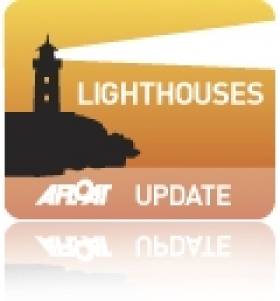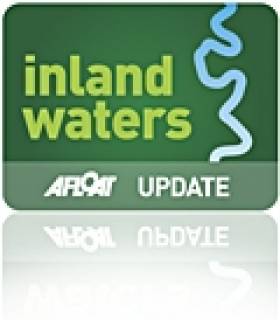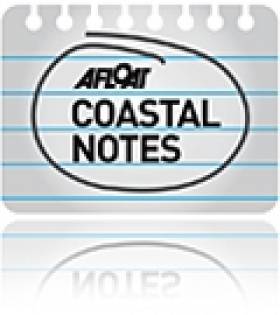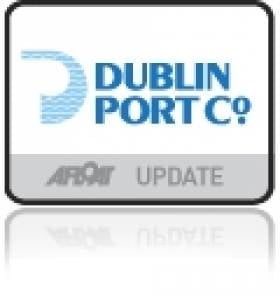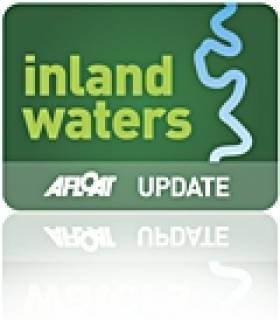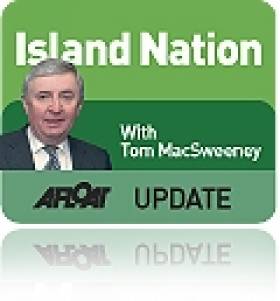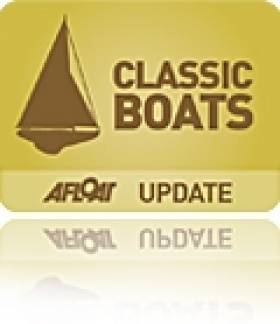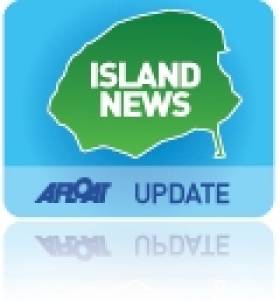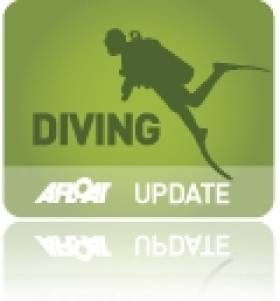Displaying items by tag: heritage
#Lighthouses - Lighthouse keeping is a 'lost tradition' in Ireland as the coastal network of Irish lights has converted to automation.
But there's still one last holdout, as the Journal.ie reports – not to mention the many former lighthouse keepers who have a lifetime of stories to share.
One of them is Gerald Butler, who today serves as attendant keeper at Galley Head lighthouse, included in the new Great Lighthouses of Ireland tourism initiative.
But his career – which began in 1969 at the age of 19, following his family's maritime leanings – previously took him to nearly every lighthouse in the State, including the isolated Fastnet Rock.
Sadly it's a profession that Ireland will never see again upon the retirement of Ireland's last keeper at Hook Lighthouse in Co Wexford.
“Once the era changed and the light keepers were gone the tradition went with them,” said Butler, who thinks what's "most important now is to preserve the history and preserve the heritage."
TheJournal.ie has much more on the story HERE.
Lough Derg Trail Showcases Natural Heritage Treasures
#loughderg – A new trail showcasing the rich natural heritage of Lough Derg has been developed in time for the 2015 summer season.
Lough Derg (on the Shannon) Nature Trail is produced by the County Councils in Clare, Galway and Tipperary, and co-funded by The Heritage Council and Lakelands & Inland Waterways.
The 130-kilometre trail takes visitors from Portumna in Galway down the western shore of the lake, to Killaloe in Clare, and back up on the eastern side to Terryglass in Tipperary. The stops along the route, which can be travelled in any direction, include walking routes, lakeshore access, great bird watching locations, woodland parks for adventuring, and quiet spots to enjoy the beautiful vistas of Ireland's third largest lake and the largest lake in the River Shannon system.
Among the 24 discovery points featured is the monastic site at Inis Cealtra - known as the "Jewel of the Lough' - as well as the ancient woodlands of Portumna Forest Park, Derrycrag Wood, Raheen Wood and Cominchas Forest, the sheltered bays and harbours at Rosmore, Mountshannon and Garrykennedy, and the twin heritage towns of Killaloe-Ballina.
Speaking ahead of the trail launch in Portumna this Thursday, Cllr. Mary Hoade, Cathaoirleach of Galway County Council, who said "the outstanding natural heritage of Lough Derg enhances the visitor experience by providing a range of vistas, sights, sounds and places to explore and opportunities to experience, many of which are featured in this wonderful new trail."
"The high level of involvement from communities around Lough Derg in the design and content of this trail has been instrumental in its development, and is reflective of the community-centred approach to protecting the environment and promoting tourism around the Lough Derg region. I am confident this new trail will deliver additional visitors to Lough Derg, as well as economic benefits for the wider local community and tourism sector here in the Lough Derg Region," added the Cathaoirleach.
Each of the discovery sites selected for inclusion in the Lough Derg Nature Trail featured in the Natural Heritage Audit of Lough Derg (on the Shannon) produced by Dr Allan Mee and Shane O'Neill and written by Dr. Janice Fuller. The trail project meanwhile, was directed by the three County Council Heritage Officers in the region, Marie Mannion (Galway), Congella McGuire (Clare) and Roisín O'Grady (Tipperary), and Nuala O'Connell (Senior Executive Planner, Tipperary County Council).
According to Marie Mannion: "Galway County Council, along with the Councils in Clare and Tipperary, are delighted to have played a central role in developing a trail around what is a largely undiscovered natural amenity in the heart of Ireland. This trail provides visitors and locals alike with a continuous guided tour around Lough Derg in the Lough Derg Region taking in some of the best scenery and natural sites that Ireland has to offer."
"Lough Derg is Ireland's premier inland navigation and water sports destination, and is also a paradise for anglers along with being a popular region for bird watching. The lake is fully navigable and has many beautiful harbours and piers for mooring. The diversity of landscapes in the Lough Derg lakelands, coupled with the many hundreds of heritage sites dotted in and around its shoreline make it a wonderfully diverse and enjoyable visitor destination. This trail, which complements the existing Lough Derg Heritage Trail, aims to inform and guide visitors to the region about the many places to experience and enjoy here," added Ms. Mannion.
The new trail will be officially launched at a seminar being held at The Workhouse Centre in Portumna, County Galway, next Thursday, 30th April.
The event will feature presentations by Dr. Alan Mee on the White Tailed Sea Eagles on Lough Derg, consultant ecologist and writer Dr. Janice Fuller on 'Going Wild on the Lough Derg Nature Trail', and Lorcán O'Toole of the Golden Eagle Trust on the effectiveness of existing tourism policies for rural communities.
A detailed guide to accompany the Nature Trail will also be launched on the day.
Sites featured in the Lough Derg (on the Shannon) Nature Trail include Portumna Water Recreation Park, Portumna Forest Park, Abbeyville Golden Mile, Derrycrag Wood, Rosmore Pier (Galway), Coos-East Clare Way, Clare/Galway), Dromaan Harbour at Williamstown, Church Bay, Mountshannon, Inis Cealtra, Woodpark, Raheen Wood, Aughinish Wood, Ballycuggaran Forest & Rinnaman Point (Clare) Killaloe-Ballina (Clare/Tipperary) Castletown (The Lookout), Castlelough Woods, Garrykennedy, Youghal Bay, Ryan's Point, Dromineer Bay, Luska Bay at Coolbaun, Cominchas Forest, and Terryglass (Tipperary).
Copies of the Lough Derg (on the Shannon) Nature Trail and accompany guide will be distributed to tourist offices and visitor attractions around Lough Derg. For more visit www. galwaycoco.ie.
Armada Wreckage Washed Onto Sligo Shore
#SpanishArmada - More wreckage from Spanish galleons shipwrecked off the northwest coast more than 400 years ago has been washed up on a Sligo beach.
And according to The Irish Times, it's possible that this weekend's low tides could expose even more remnants from the three vessels - sparking concerns for the integrity of the wreck sites, which lie in 15 metres of water some 60 metres from the low tide mark.
Donal Gilroy from the Grange and Armada Development Association (GADA) said the wooden objects found on the beach this week had "been buried off Streedagh for nearly 430 years. It is lucky they were not carried out by the tide.”
The find comes just months after a near fully intact rudder, believed to be from one of the 1588 fleet, was discovered at Streedagh beach by a local farmer.
“This is a protected site but we worry that these boats are being moved by storms," added Gilroy. "They have thrown up more in the last two years than in the previous 40."
The Irish Times has more on the story HERE.
Dublin Port's Diving Bell To Be Restored As Visitor Centre
#DublinPort - Dublin Port's 140-year-old diving bell is set to be restored as a tourist attraction, as the Irish Independent reports.
The diving bell was first used in construction of the capital's deep-water quays in 1871, allowing for water to be pumped out and air to be pumped in for workers to make the river bed level, acting like a mobile caisson.
It was last used in the building of quayside walls as recently as 1958, and following a campaign to save it from the scrapheap in the 1980s it was moved to its present location on Sir John Rogerson's Quay.
Now it will form the basis of a new interpretive centre to be readied this June, where visitors will be able to access the 90-tonne device from beneath and learn more about its fascinating history.
The Irish Independent has more on the story HERE.
More from Dublin Port Company:
Have you ever passed by the odd looking, bell-shaped, red metal structure standing tall on Sir John Rogerson's Quay and wondered what it is? You could be forgiven for thinking it is a modern art sculpture or misplaced mound of metal. It is in fact an ingenious feat of Irish engineering that was essential in building Dublin's quay walls for 87 years. This is Dublin Port's "Diving Bell".
Dublin Port Company today announced a new project that will shed light on this important artefact and will transform the Diving Bell into a new interpretive exhibition that explains its origin and history.
The Diving Bell was designed by the port engineer Bindon Blood Stoney (1828 to 1907) and built by Grendon and Co., Drogheda. It was delivered to the Port in 1866, entered service in 1871 and was used in the building of the Port's quay walls until 1958. Stoney was a prodigious engineer and among his achievements were the building of the Boyne Viaduct in Drogheda, the construction of O'Connell Bridge and the building of many of the Port's quay walls including Sir John Rogerson's Quay and North Wall Quay Extension.
The Diving Bell was used in the building of the Port's quay walls from the Victorian era right up until almost the 1960s. It was a ground-breaking piece of engineering innovation in its day.
Its lower section was hollow and bottomless, providing just enough room for six men to work at a time. Once lowered into position on the riverbed, the crew entered through an access funnel from the surface and compressed air was fed in from an adjacent barge. The men inside the bell worked on the river bed exposed at their feet, excavating the site where a massive concrete block would later go; all the excavated soil was stashed in trays hanging inside the bell, and brought up when the bell was lifted.
The project, which commences this week and opens in mid-June 2015, will elevate the 13m tall, 90 tonne Diving Bell onto a two metre steel structure, creating a ramped public access route underneath. A water feature will also be installed beneath the structure accompanied by a series of interpretative panels explaining the historical, social and engineering significance of the Diving Bell. The new exhibition will be illuminated at night time using energy efficient LED lighting.
The project has been designed with the expertise of a range of people including the architect Sean O'Laoire, the sculptor Vivienne Roche, Tom Cosgrave (professor of engineering at the University of Limerick) and Mary Mulvihill of Ingenious Ireland.
This is the first project in Dublin Port's plan to create a 'distributed museum' of attractions across the Dublin docklands and into Dublin Port to preserve the port's industrial heritage and history.
Weslin Construction Ltd. has been appointed to carry out the project, which will be completed by mid-June 2015, when the newly reconfigured Diving Bell will open again to the city.
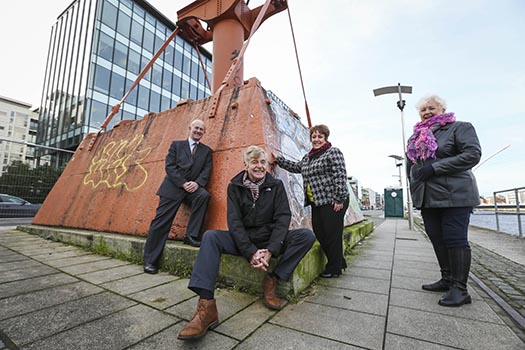
Pictured at the announcement are: Eamonn O'Reilly, Chief Executive, Dublin Port Company, Sean O'Laoire, Director of MOLA Architecture, Dolores Wilson, St. Andrews Resource Centre and Betty Ashe, St. Andrews Resource Centre
Eamonn O'Reilly, Chief Executive, Dublin Port Company said: "The Diving Bell is a remarkable feat of Irish engineering and Dublin Port Company is proud to invest in its transformation and bring the history of this magnificent structure to life along the Liffey. True to the commitment in our Masterplan, we are working to better integrate Dublin Port and the city. Developing the Diving Bell is the first step in our plan to create a distributed museum of port and industrial heritage attractions across the Dublin docklands and into the port. We are confident that the Diving Bell will give Dubliners and visitors to the city a true sense of Dublin as a port city with a wealth of industrial heritage to discover."
Betty Ashe of St. Andrew's Resource Centre, Pearse Street, said: "I am delighted that the next phase of the Diving Bell Project is now underway, having been involved in a Millennium project with St. Andrew's Resource Centre, the DDDA and Dublin Port Company to save and restore this fascinating artefact from the Victorian era. As a port community, we have a duty to preserve local history for future generations. I thank Dublin Port Company for sharing that vision and giving the Diving Bell a prominent place in the history books for this community and our city."
Waterways Ireland Consults On Heritage & Biodiversity Plan
#InlandWaters - Waterways Ireland is inviting submissions from all interested parties, groups and individuals before commencing the development of a Heritage & Biodiversity Plan for the waterways under its care.
The cross-border agency for Ireland's inland waterways is particularly seeking input into the issues and/or projects that should be addressed.
Beginning tomorrow Monday 20 October and running till 12 January 2015, interested stakeholders can complete an online survey (or submit by email or post) to gauge waterways users' vision for the natural and cultural heritage of our rivers, lakes and canals.
Future consultations will seek input on Waterways Ireland's proposed Disability Action Plan, new Lough Erne bye-laws, and Environmental and Heritage Policy going forward. For more see the Waterways Ireland website HERE.
Is Ireland's Maritime Heritage Recognised?
#maritime – I was giving a talk at Bishopstown Library on the western side of Cork City during Heritage Week on the subject – "Is Ireland's Maritime Heritage Recognised as Part of Ireland's Heritage?" – outlining what had been achieved by some of the many great Irish maritime figures when a member of the audience asked: "Why is it that we have heard so little about them?"
Thereby hangs a tale.
Is it neglect, ignorance or a failure of our educational system that Irish public consciousness appears to lack awareness of the impact which Irish mariners have made on world and Irish history?
From St. Brendan the Navigator; Grace O'Malley, Granuaile; John Philip Holland; Tom Crean; Captain Robert Halpin; Ernest Shackleton, all Irish, to Admiral Barry of Wexford; Admiral William Brown of Foxford; Francis McClintock; Captain Roberts of the Sirius, the first steamship to cross the Atlantic; Jerome Collins, the first media meteorologist; all are names which, when brought together underline a strong maritime heritage and there are more.
In fact, there are records of Irish seafarers having been involved in fighting the Roman Empire; of Irish ships developing foreign trade in the Middle Ages. Irishmen have explored the Artic regions, developed the submarine and the marine turbine engine and formed navies in several parts of the world.
"I never knew about those people, this has opened a window of knowledge, why do we not take pride in our marine heritage?" one woman asked me after the talk, while another man said: "It makes me proud to know what our mariners have achieved, but it is not common knowledge"
There are people who are trying to remedy the years of neglect of our maritime heritage and one effort in this regard is the symposium which the National Maritime Museum in Dun Laoghaire will hold later this month. This is being organised jointly with University College Dublin and is a response to the "extremely low level of Irish maritime heritage research."
That lack of research was identified in the Maritime Heritage Gathering Report last year which made a key recommendation that it should be rectified.
Professor John Brannigan, Senior Lecturer in UCD's School of English, Drama and Film, got in touch with the Maritime Museum to find out how students at UCD might be able to use the Museum's library and artefacts to deepen their understanding of Irish maritime history and culture.
That followed the development of a relationship between the Museum and the College which had started with six Library and Information Studies' students assisting Museum volunteers to re-instate the Museum's extensive Library and Archive.

Admiral John Barry Statue - The Irishman Who Founded The Us Navy - Watches Ovr Wexford Harbour
UCD's Earth Institute, UCD's Humanities Institute and the Atlantic Archipelagos Research Consortium have agreed to sponsor an Irish Sea symposium in the Museum. To organise it, Professor Brannigan teamed up with Dr.Tasman Crowe from UCD's School of Biology & Environmental Science and Richard McCormick, the Museum's Director of Library and Archive.
Richard is a former staffer with Bord Iascaigh Mhara, the semi-State fisheries board, who has been carrying out extensive work on re-instating the library and archive at the National Museum house in the Mariners' Church at Dun Laoghaire, following the extensive renovations there. It has a collection of 5,000 books and archival material collected in over 73 years and which has been in storage for 7 years due to the extensive renovations to the Mariners Church.

Inside National Maritime Museum
"The Maritime Museum is a rather impressive 177-year old church building in which the Royal Navy and seamen and fishermen passing through Dun Laoghaire worshipped and we also have the original RN prisoners docks," Richard McCormick told me. "I am very pleased with our association with UCD as if the National Maritime Museum is to prosper it has to broaden its appeal and let people know we exist and this symposium will help by reaching an international audience through UCD's Scholarcast system (http://www.ucd.ie/scholarcast/series7.html) which gets 2,000 hits a month"

Maritime Heritage Gathering In The National Museum Last Year
"This symposium and the Maritime Heritage Gathering last year are small but significant steps in raising the profile of Ireland's rich maritime heritage. This will not only be good for us, but also for all the Irish maritime museums around the coast and justify the sterling work that is being done in this field by the voluntary sector."
Quite a lot of local maritime museums and independent researchers attended the Maritime Heritage Gathering last year from all around the Irish coast and from the UK. Museums and heritage researchers can often find themselves working in isolation on maritime heritage and, perhaps consequently, this work does not get the official attention that it deserves.
"The serious recommendations that arose from that event will simply have to gain momentum and traction in the years to come," says Mr.McCormick.
"Our Museum Library & Archive forms a very important component of our maritime heritage. The merchant marine and leisure sectors are very well represented, so is the Royal Navy from historical times and I am very keen in the coming years to acquire documentary, photographic and audio visual material about the fishing industry so that its story can also be recorded for posterity."
At the symposium, twelve speakers will cover topics as diverse as the Irish Sea's underwater heritage, its fisheries, marine biology, coastline and seabed mapping, in addition to its rich maritime art, history, poetry and literature as well as the prolific smuggling industry that once thrived in North County Dublin. This mix of interests is designed to stimulate debate about the Irish Sea and will conclude with workshop sessions to ascertain how the various constituencies might collaborate together in a large interdisciplinary research project. The speakers' presentations will also be recorded for a worldwide audience on UCD's Scholarcast Series and, should this event prove successful, consideration will be given to expanding the geographical range in future years.
The symposium will begin with a free public lecture in the Maritime Museum on 'The Nature of the Irish Sea Coast' on Friday September 19 at 7 pm by Richard Nairn, with the Museum being open to the public prior to that as part of Dun Laoghaire Rathdown County Council's Cultural Night celebrations. Entry to the Symposium on Saturday, September 20, will cost €10 for the day, payable on registration at the Museum. There will also be an optional €30 dinner for participants in the National Yacht Club, Dun Laoghaire on Saturday night, also payable at registration.
For information on the symposium and to register for the event visit here. More than half the available places have already been booked.
• You can view the interior of the national Museum by clicking here
• To read the report of last year's Maritime Heritage Gathering click here
Email: [email protected]
Twitter: @Tom MacSweeney @AfloatMagazine
#HistoricBoats - The discovery of a traditional anadian river canoe in the rafters of a Galway building sparked an investigation by radio documentary maker Joe Kearney that goes back some 200 years to Ireland's deep connections with the New World.
The 'Grandfather Canoe' – or Akwiten, to give its native name – was originally crafted by the Mailseet First Nation of New Brunswick in Canada's Maritimes, a people who have made and paddled canoes along the St John River for thousands of years.
In his programme for RTÉ's Documentary on One strand, Kearney charts the history of Akwiten from its days on the St John to its removal to Headford Castle in Co Galway by British army captain Stepney St George, its bequeathal to NUI Galway amid the turmoil of post-famine Ireland, and its and eventual – and surprising – rediscovery.
Achill Islander Finds Only Known Photo Of Life in 'Deserted Village'
#IslandNews - A native Achill Islander believes he's discovered the only photo of the area's famous Deserted Village taken while it was still inhabited.
As Paddy Gallagher told The Irish Times, he was searching for images of Achill online when he came across a page from a 1915 issue of National Geographic magazine with a caption suggesting it was documenting village life on the east coast.
But Gallagher knew it was a photo of the Co Mayo island, and armed with a copy of the magazine ordered from eBay he set out to find the precise location and hopefully surprise whoever was living there today.
That's when he realised it was the Deserted Village, a collection of 80 unmortared stone houses all but abandoned after the Famine by 1852, and last occupied as a 'booley village' by young farmers from nearby Dooagh in the 1940s.
However, as the photo shows, at least one family seemed to still make its home in the village a century ago.
The Irish Times has more on the story HERE.
Offaly Diver Raises Bronze Age Sword From Shannon
#Diving - A Bronze Age sword has been plucked from the River Shannon in Co Offaly by a local diver, according to the Irish Independent.
And it's only the latest in a series of historical finds by members of the Shannonside Sub Aqua Club in Banagher, which has previously fished out Viking and Celt weaponry from the river.
The latest find is thought to be some 3,500 years old, and was only discovered by accident when diver Michael O Ruairc was in a routine search and rescue exercise.
The Irish Independent has more on the story HERE.
More Treasures Unearthed In Atlantic Storm Aftermath
#CoastalNotes - The extreme Atlantic storms of the first weeks of this year have proved a boon for archaeologists and other heritage enthusiasts on the western coastline, from the exposing of the wreck of a century-old schooner to the remains of Neolithic graves and the traces of an ancient 'drowned' forest.
And as The Irish Times reports, the aftermath of that serve weather is continuing to reveal more artefacts from Ireland's past, such as a forgotten harbour from the medieval period, early Christian burial sites and tools from the Mesolitic era.
Meanwhile, the drowned forest discovered on the northern shore of Galway Bay is providing evidence of what can happen when our planet experiences climate change, according to a local geology academic.
“That forest drowned because of weather,” says Prof Michael Williams of NUI Galway. “It was flourishing 5,000 years ago and then the climate in the north Atlantic changed. It became cooler and wetter, and the sea level began to rise."
Even so, Prof Williams doesn't deny the effects of the human footprint on climate change today, but warns that regardless of human action, future generations must prepare for rising seas over the next tens of thousands of years.
The Irish Times has more on the story HERE.



























